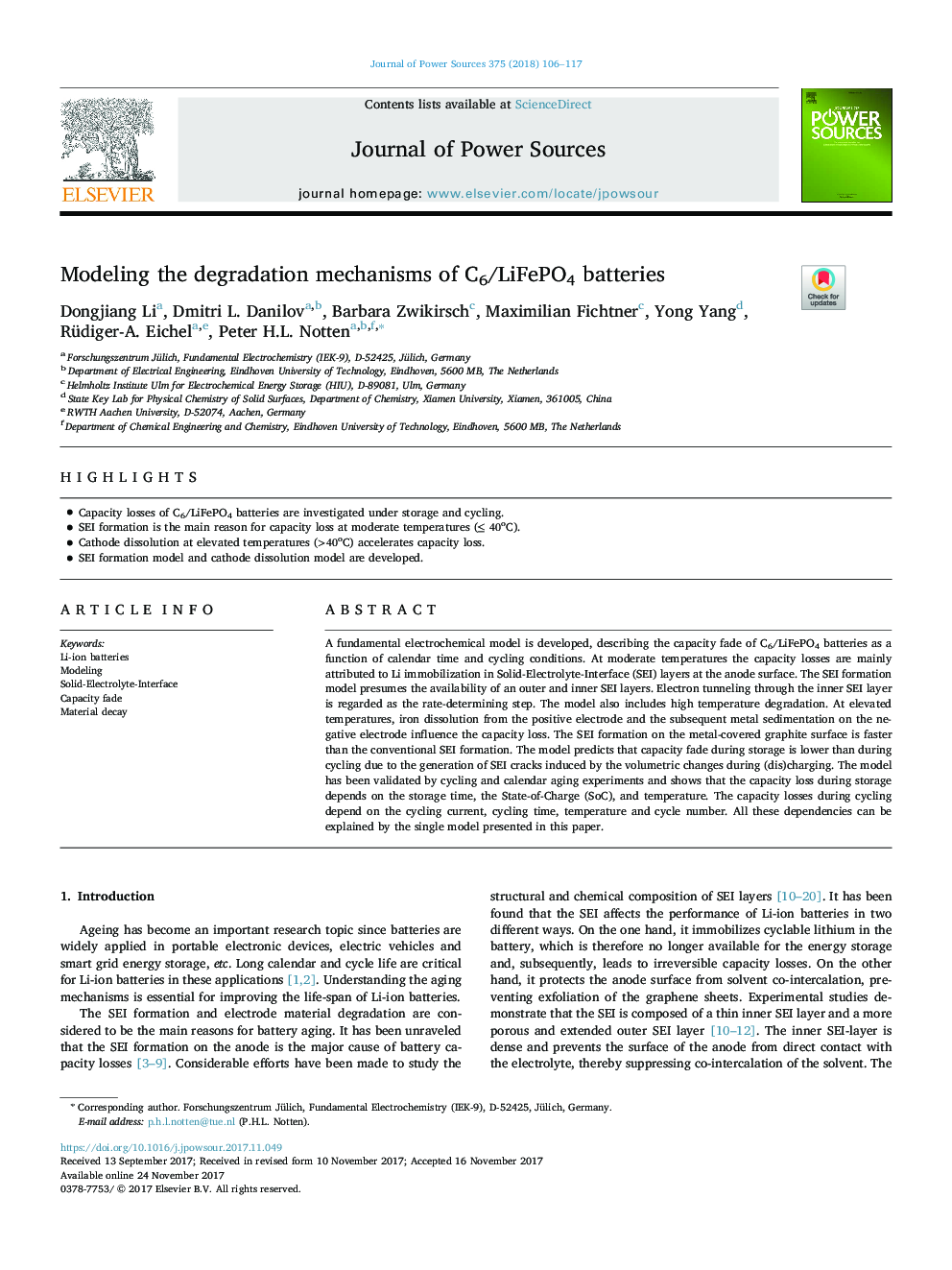| Article ID | Journal | Published Year | Pages | File Type |
|---|---|---|---|---|
| 7726244 | Journal of Power Sources | 2018 | 12 Pages |
Abstract
A fundamental electrochemical model is developed, describing the capacity fade of C6/LiFePO4 batteries as a function of calendar time and cycling conditions. At moderate temperatures the capacity losses are mainly attributed to Li immobilization in Solid-Electrolyte-Interface (SEI) layers at the anode surface. The SEI formation model presumes the availability of an outer and inner SEI layers. Electron tunneling through the inner SEI layer is regarded as the rate-determining step. The model also includes high temperature degradation. At elevated temperatures, iron dissolution from the positive electrode and the subsequent metal sedimentation on the negative electrode influence the capacity loss. The SEI formation on the metal-covered graphite surface is faster than the conventional SEI formation. The model predicts that capacity fade during storage is lower than during cycling due to the generation of SEI cracks induced by the volumetric changes during (dis)charging. The model has been validated by cycling and calendar aging experiments and shows that the capacity loss during storage depends on the storage time, the State-of-Charge (SoC), and temperature. The capacity losses during cycling depend on the cycling current, cycling time, temperature and cycle number. All these dependencies can be explained by the single model presented in this paper.
Related Topics
Physical Sciences and Engineering
Chemistry
Electrochemistry
Authors
Dongjiang Li, Dmitri L. Danilov, Barbara Zwikirsch, Maximilian Fichtner, Yong Yang, Rüdiger-A. Eichel, Peter H.L. Notten,
